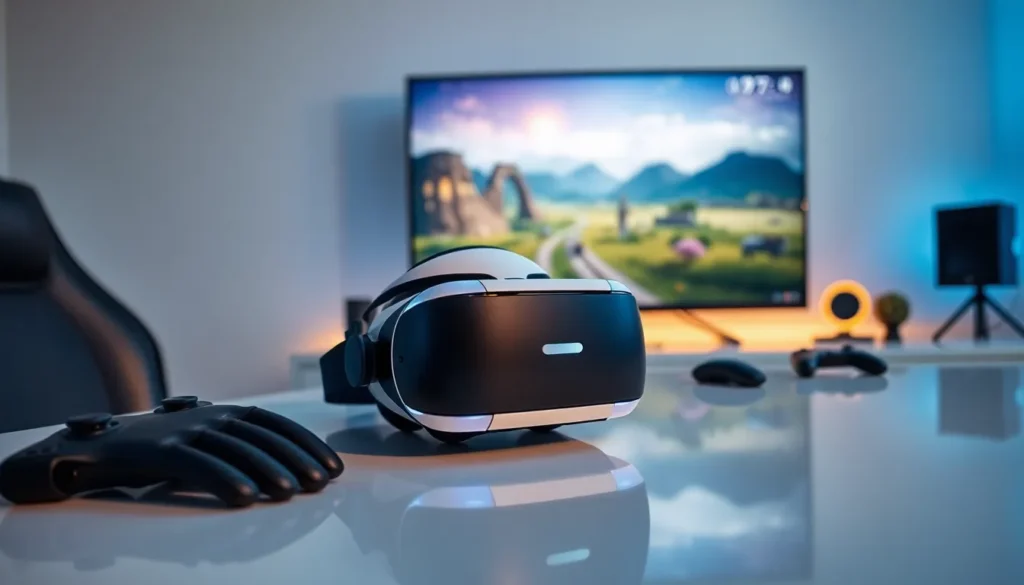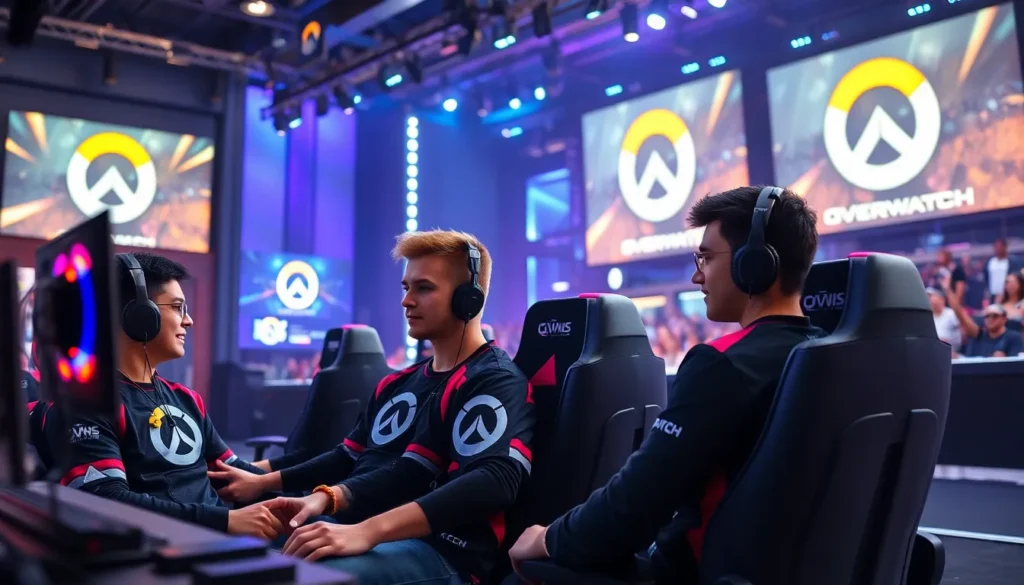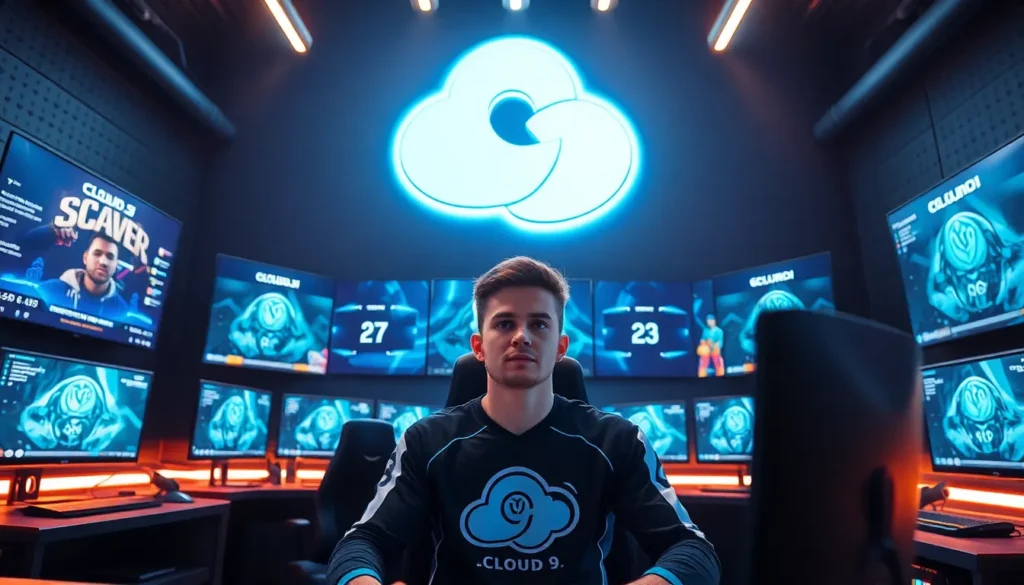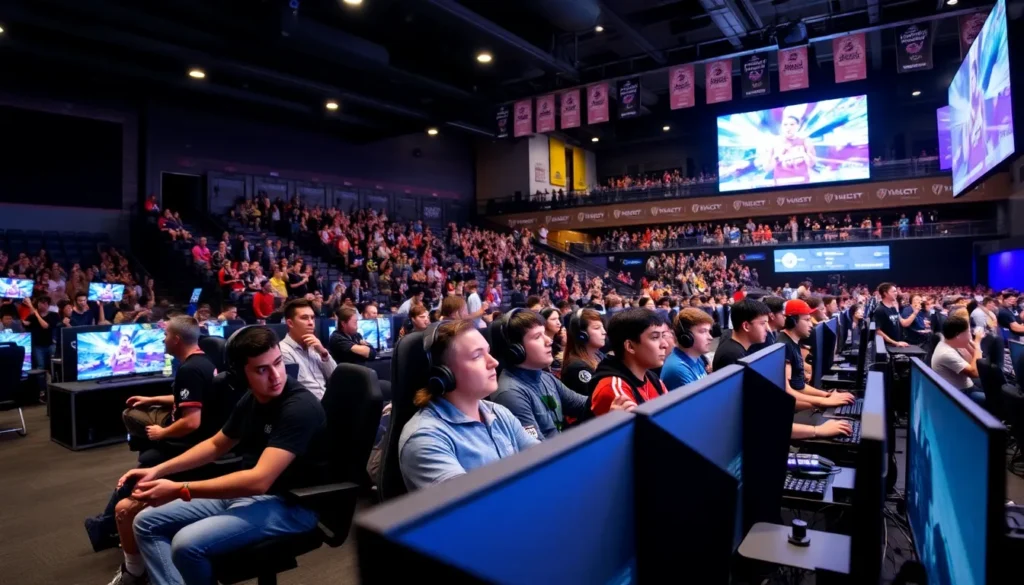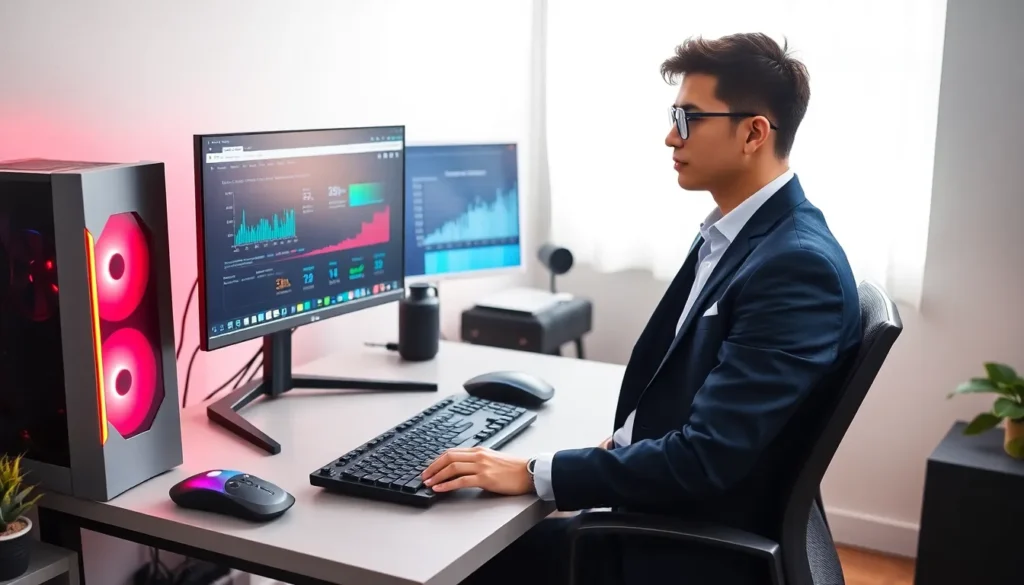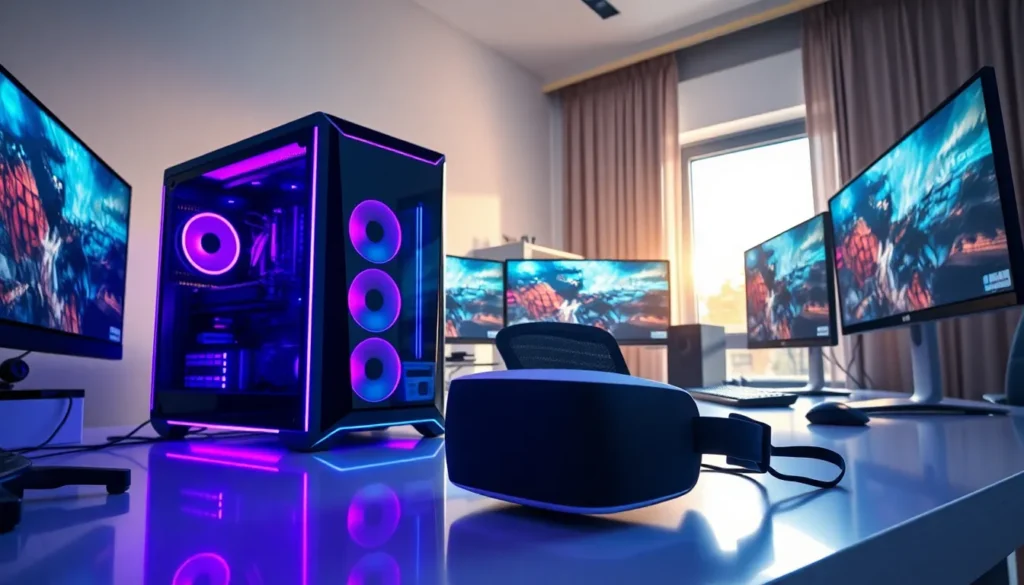Table of Contents
ToggleEsports training is rapidly transforming the landscape of competitive gaming. As players strive to elevate their skills and enhance their performance, structured training regimens have become essential. Just like traditional athletes, gamers are now focusing on physical fitness, mental resilience, and strategic thinking to gain an edge in their respective games.
With a growing emphasis on teamwork and communication, effective training programs are designed to develop not just individual prowess but also synergy within teams. From analyzing gameplay footage to practicing specific strategies, aspiring esports athletes are discovering the importance of a well-rounded training approach. As the esports industry continues to expand, understanding the nuances of training can make all the difference in achieving success on the virtual battlefield.
Overview of Esports Training
Esports training encompasses structured programs designed to enhance gamers’ skills, similar to traditional sports. Players emphasize physical fitness, mental resilience, and strategic thinking.
Key Elements of Esports Training
- Skill Development
Skill development focuses on improving fundamental gameplay mechanics, such as aiming, movement, and decision-making. Players engage in drills that target specific areas for improvement.
- Physical Fitness
Physical fitness plays a crucial role in esports. Many gamers incorporate exercise routines that boost stamina, coordination, and overall health. Regular physical activity enhances performance during long gaming sessions.
- Mental Resilience
Mental resilience is vital for enduring the high-pressure environment of competitive gaming. Training often includes mindfulness techniques, stress management strategies, and cognitive exercises to bolster concentration and focus.
- Teamwork and Communication
Teamwork and communication training fosters collaboration among team members. Players work on effective strategies for sharing information and executing coordinated plays, which increases overall team synergy.
- Analysis of Gameplay
Analysis of gameplay involves reviewing recorded matches to identify strengths and weaknesses. Players assess their strategies and decision-making processes, allowing for targeted improvements in their performance.
- Regular Competitions
Participating in regular competitions provides real-world experience. Players gain insights into competitive dynamics, adapting their training to face various opponents and challenges.
By integrating these elements, esports training offers a comprehensive approach, driving growth and success for aspiring gamers in the industry.
Importance of Esports Training
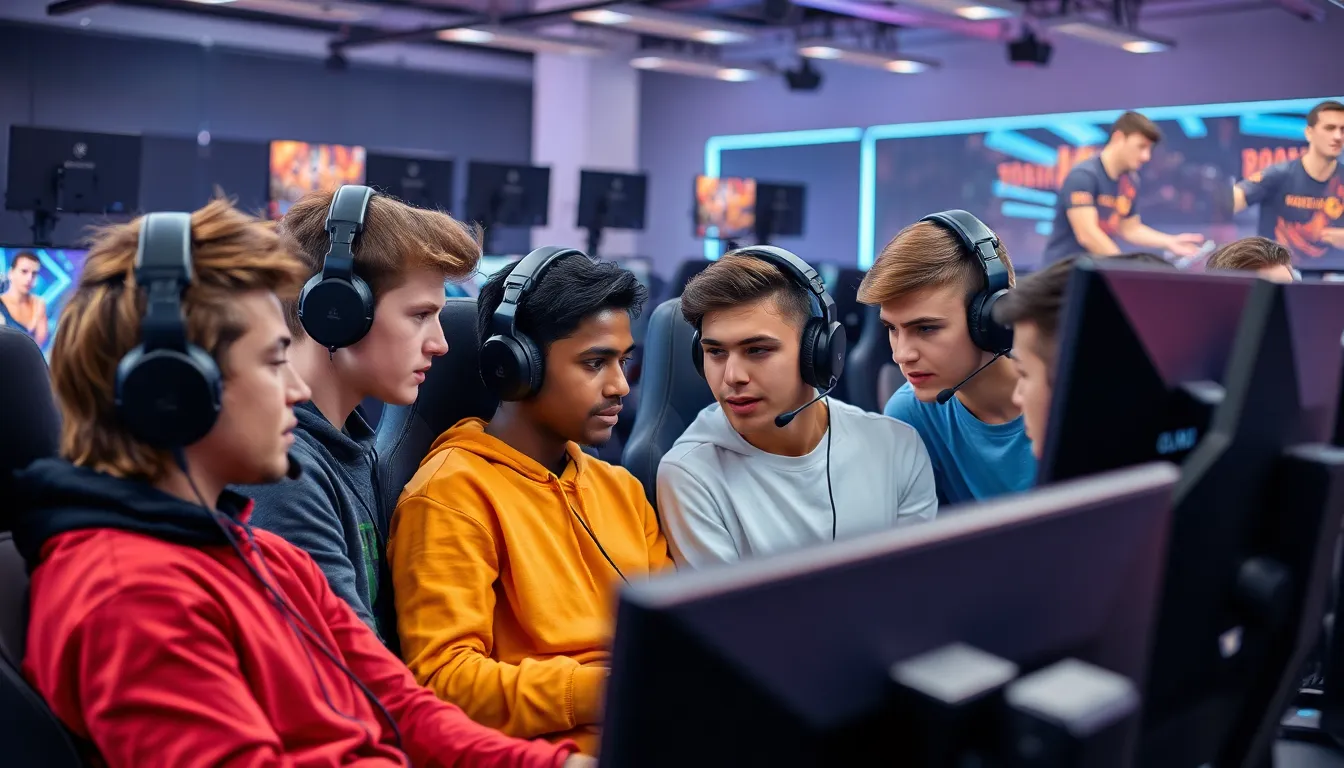
Esports training significantly enhances player capabilities and prepares them for competitive success. It focuses on various key components that contribute to overall performance.
Skill Development
Skill development remains a foundational aspect of esports training. Players refine their gameplay mechanics, such as aiming precision and decision-making speed, through specialized drills. Maintaining consistent practice helps gamers internalize techniques, allowing for quicker execution during matches. Methods like aim training software and reaction time exercises further bolster performance. This systematic approach ensures players can adapt to in-game dynamics effectively.
Team Dynamics
Team dynamics play a crucial role in esports training. Effective communication fosters collaboration, enabling players to execute strategies and adapt in real-time. Regular practice sessions promote synergy, allowing team members to understand each other’s playstyles. Reviewing recorded gameplay enhances collective performance, identifying areas for improvement. Engaging in teamwork exercises strengthens trust and accountability, vital for achieving success in high-stakes competitions. By prioritizing these dynamics, teams set themselves up for better coordination and resilience during tournaments.
Training Methods for Esports
Esports training employs various methods tailored to enhance player performance for both individual and team dynamics. These techniques focus on fundamental skills, physical fitness, mental strategies, and teamwork.
Individual Practice Techniques
Individual practice techniques aim to refine specific skills and boost overall performance.
- Aim Training: Players utilize software tools like Aim Lab or Kovaak’s to improve precision in shooting. These tools provide customized drills targeting weak points.
- Reaction Time Drills: Fast-paced exercises, such as clicking on randomly appearing targets, help enhance players’ responsiveness.
- Skill-specific Exercises: Players concentrate on particular components, like map knowledge or character abilities. They engage in dedicated sessions to memorize maps and practice usage of in-game tools.
- Replay Analysis: Reviewing gameplay footage enables players to identify mistakes and assess decision-making processes. This self-evaluation fosters continuous improvement.
Team Practice Strategies
Team practice strategies focus on fostering collaboration and enhancing group performance.
- Scheduled Scrims: Regular practice matches against other teams simulate competitive conditions, refining tactics and communication.
- Role Assignments: Clearly defined roles within the team establish responsibilities, ensuring efficient execution of strategies during matches.
- Communication Drills: Exercises designed to improve in-game communication help streamline teamwork. These may involve simulated game scenarios to practice callouts and strategy discussions.
- Team Reviews: After scrims, teams discuss game footage collaboratively, highlighting strengths and areas needing improvement. This collective approach promotes shared understanding of gameplay dynamics.
- Trust-building Activities: Non-gaming exercises encourage team bonding and trust. Activities outside of gaming, such as team-building workshops, foster camaraderie.
These methods collectively contribute to the comprehensive skill development of individual players and their teams, essential for success in the esports landscape.
Technology and Tools in Esports Training
Esports training heavily relies on advanced technology and tools that facilitate skill enhancement and overall player performance. The following sections address essential software, platforms, and hardware considerations relevant to training in the esports environment.
Software and Platforms
Software solutions and platforms play crucial roles in esports training. Aim training programs like Aim Lab and Kovaak’s aim trainer help players develop precision, tracking, and reaction times through specialized exercises. These tools provide metrics for tracking improvement, enabling players to identify specific areas needing enhancement.
Game analysis software such as Overwolf and Mobalytics allows players to review gameplay footage and receive actionable insights. These platforms offer performance metrics that highlight strengths and weaknesses, guiding strategic adjustments to gameplay.
Collaboration tools such as Discord and TeamSpeak promote communication during practice and competition, ensuring seamless interaction among team members. Social media platforms also serve as spaces for sharing insights and strategies, creating communities that support collaborative learning.
Hardware Considerations
Hardware considerations significantly impact performance in esports training. High-refresh-rate monitors (144Hz or 240Hz) deliver smoother visuals, reducing motion blur and enhancing responsiveness. Gaming mice with customizable DPI settings enable precise control, while mechanical keyboards provide tactile feedback essential for quick actions.
Headsets equipped with noise-canceling features enhance audio clarity, improving communication and in-game awareness. Reliable internet connections prevent lag, ensuring stable performance during training sessions and competitions.
Customization of hardware settings allows players to tailor their setups according to personal preferences and specific game requirements. Ergonomic chairs contribute to comfort during extended gaming sessions, promoting better focus and reduced fatigue.
Future Trends in Esports Training
Emerging trends in esports training focus on leveraging advanced technology and innovative methodologies to enhance player performance. Gamers are increasingly adopting virtual reality (VR) and augmented reality (AR) for immersive training experiences. These technologies allow players to engage in realistic scenarios, refining skills while enhancing spatial awareness and reaction times.
Wearable technology is gaining traction in esports training. Devices like fitness trackers and heart rate monitors help players assess physical and mental states during practice. Analyzing biometric data can inform tailored training regimens, optimizing physical health and cognitive performance.
Artificial Intelligence (AI) is becoming integral in providing personalized training programs. AI algorithms analyze player performance, offer customized feedback, and identify weaknesses. By utilizing big data, players can adapt their training to improve specific skills, ensuring a competitive edge in gameplay.
Collaboration among teams is evolving through remote training platforms. With the rise of online competitions, teams can train together from different locations. Tools like cloud-based platforms facilitate real-time practice, enhancing teamwork and strategy development without geographic limitations.
Mental wellness is increasingly prioritized in esports training programs. Techniques such as mindfulness and psychological coaching are becoming standard practices. These methods help players manage stress and maintain focus, ensuring peak mental performance during competitions.
The integration of gamification in training methods is on the rise. Incorporating game-like elements into drills makes training more engaging, encouraging players to improve through competition and rewards. This approach maintains motivation and drives continual skill development.
Educational institutions are recognizing the significance of esports training. Schools and colleges are intensifying their programs to enhance skills for future careers in gaming and esports management. Structured curricula are being developed, combining training with business and coaching methodologies.
The future of esports training relies on cutting-edge technology, personalized programs, and an emphasis on mental resilience. These trends shape the landscape of competitive gaming, ensuring players are well-equipped for the challenges ahead.
Esports training is transforming the landscape of competitive gaming. By focusing on skill development physical fitness and mental resilience players are better equipped to face the challenges of high-stakes environments. The integration of technology and innovative training methods is enhancing performance and fostering collaboration among team members.
As the industry evolves the emphasis on personalized training programs and mental wellness will likely shape future practices. With the rise of advanced tools like VR and AI players can expect a more tailored approach to their training. The commitment to improving both individual and team dynamics will be crucial for success in the ever-competitive world of esports.

